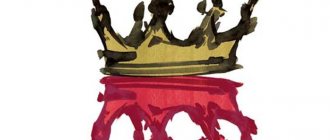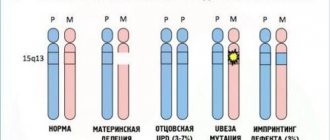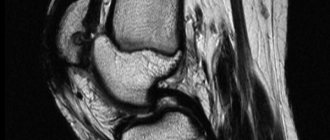Psychotherapy
Psychotherapy (or talk therapy) is used in the treatment of dysthymia or other mood disorders to help a person develop missing communication skills, manage their emotions, and overcome false negative beliefs about themselves. Similar to the learning process, which involves the formation of new connections between nerve cells in the brain, psychotherapy works by changing the way the brain functions. Psychotherapy can also help improve the patient's attitude towards treatment and a healthy lifestyle, understand the causes and identify triggers that influence the development of the disorder, and cope with existing symptoms of the disease. Thus, visiting a therapist will help you learn:
- Express your thoughts and feelings in a healthy way.
- Cope with your negative emotions.
- Overcome a life crisis or other current difficulty.
- Identify the problems that contribute to depression and find the most effective ways to cope with them.
- Identify behaviors that cause or worsen illness symptoms and change them.
- Identify negative emotions, thoughts and beliefs and replace them with healthy, positive ones.
- Manage symptoms of depression and minimize the risk of their recurrence.
- Regain a sense of satisfaction and control over your own life.
- Set realistic goals and achieve them.
- Analyze past relationships and existing negative experiences, draw the necessary conclusions.
- Form and develop positive interactions and healthy relationships with others.
- Increasing self-esteem and improving self-presentation skills.
There are different types of psychotherapy, and many people need a combination of different treatments. Psychological therapy can be done individually or in a group. Support groups are ideal for those who want to share their feelings with others who are experiencing similar problems. Thus, the following treatment options exist:
- Cognitive behavioral therapy (CBT). This type of psychotherapy is one of the most popular and effective methods of overcoming depression and other affective disorders. It aims to identify and change negative patterns of thinking, attitudes and behavior that often contribute to depression. In addition, during cognitive behavioral therapy, people learn techniques that improve social skills and learn ways to cope with stress and relieve feelings of helplessness and anxiety.
- Interpersonal psychotherapy (IPT). This therapy focuses on identifying problems in relationships and communication, and then finding ways to improve relationships and interactions with others. It also helps to cope and survive the loss of loved ones or long-term separation from them, crises and transitional stages in life.
- Psychodynamic therapy. This type of therapy helps patients resolve their emotional conflicts, especially those related to traumatic childhood experiences.
- Process-oriented psychotherapy.
- Family therapy.
- Group therapy.
For many patients, the most effective course of treatment is a long-term combination of medication and psychotherapy, which consists of regular and systematic sessions with a psychotherapist with follow-up. Recovery from dysthymia can take some time, and symptoms can often return. Thus, one study showed that 70% of patients recovered for an average of about four years, and 50% had a relapse. Another study found that the average time to relapse was almost six years. Therefore, it is important to adhere to the recommendations of a psychiatrist even after a course of appropriate treatment has been completed.
Prevalence of the disease
The worldwide prevalence of depression (including depressive disorder or dysthymia) is estimated to be approximately 12%. According to the National Institute of Mental Health (NIMH), dysthymia affects approximately 1.5% of adults in the United States. 49.7% of these cases are considered "severe" and the average age of illness is 31 years. Similar statistics come from studies conducted by the American Psychiatric Association, which indicate that 0.5 to 1.5% of US adults experience persistent depressive disorder each year.
However, dysthymia may be present in children and adolescents. Research also shows that depressive disorder (major depressive disorder or dysthymia) affects approximately 11.2% of children aged 13 to 18 years at some point in their lives, and that girls are more likely than boys to experience a depressive disorder. As for adults, a similar correlation is observed: dysthymia is diagnosed in women twice as often as in men. This trend is quite consistent both worldwide and in the US. In general, the prevalence of major depressive disorder is higher than the prevalence of dysthymic disorder, suggesting that the course of the illness tends to relapse and remit rather than remain chronic for long periods of time. In addition, rates of depression tend to decline with increasing age, especially for people over 65 years of age. It has been observed that depression scores may be low in older adults due to increasing physical problems associated with age.
How to treat dysthymic disorder?
Most people with dysthymia are undertreated. They usually only visit their family doctors, who often cannot diagnose the problem. Such patients may only complain about physical symptoms or not see a doctor at all, because the disorder has become completely familiar to them, they have come to terms with it, and perceive it as normal. In older people, dysthymia may masquerade as dementia, apathy, or irritability.
Although dysthymia is a serious condition, it is treatable. As with any chronic illness, early diagnosis and treatment of the disorder can reduce the intensity and duration of symptoms and reduce the likelihood of developing a major depressive episode. The two main treatments for dysthymic disorder are medication and psychological therapy (psychotherapy). The therapeutic approach that will be taken to treat this condition depends on the following factors:
- the severity of existing symptoms;
- the patient’s presence or absence of desire to solve emotional or situational problems affecting his life;
- personal preferences of the patient;
- previous treatments;
- ability to tolerate certain medications;
- other emotional problems that may arise;
Psychotherapy may be recommended for the treatment of children and adolescents with dysthymic disorder, but this depends on the history of the disease, its course, symptoms, and other factors. Often in psychiatric practice, both methods can be used for greater efficiency and better results.
Risk factors
Persistent depressive disorder often begins early—in childhood, adolescence, or young adulthood—and is chronic. Several factors increase the risk of developing this disease. For example, these include the following:
- Having a first-degree relative with a depressive disorder or other mental disorder.
- Traumatic or stressful life events, such as the loss of a loved one or financial problems.
- Character accentuations are sharpened or overly enhanced personality traits. An example of such personality traits can be: pessimism, negativism, low self-esteem, a tendency to various kinds of addictions, codependent relationships, excessive self-criticism, isolation, problems with communication, a high degree of introversion.
- Presence of underlying medical conditions or other mental disorders such as personality disorders.
- Abuse of alcohol, drugs or psychotropic substances.
Drug treatment
There are different classes of antidepressants to treat dysthymia. It may take several weeks for a patient to take antidepressants to see results from this treatment. After an episode of chronic depression, they must be taken for at least six to nine months. Additionally, it can sometimes take weeks to safely stop taking an antidepressant. Therefore, before abruptly stopping taking such drugs, you should consult your doctor. Because suddenly stopping treatment or missing several doses may cause withdrawal-like symptoms and worsen symptoms of depression.
It is also worth considering that sometimes antidepressants have unpleasant side effects. This is why it is important that medications are selected only by a specialist who can help you find the right antidepressant with maximum benefit and the least side effects. It is possible that the patient may have to try different medications and dosages to find the most optimal and effective option. The types of antidepressants most commonly used to treat persistent depressive disorder include:
- Selective serotonin reuptake inhibitors (SSRIs), such as fluoxetine (Prozac) and sertraline (Zoloft), vortioxetine (Brintellix). SSRIs work by increasing serotonin levels in the brain, which can help improve and regulate a patient's mood.
- Tricyclic antidepressants (TCAs) such as amitriptyline (Elavil) and amoxapine (Azendin).
- Serotonin norepinephrine reuptake inhibitors (SSRIs), such as desvenlafaxine and duloxetine. SSRIs increase the amount of serotonin and norepinephrine in the brain.











